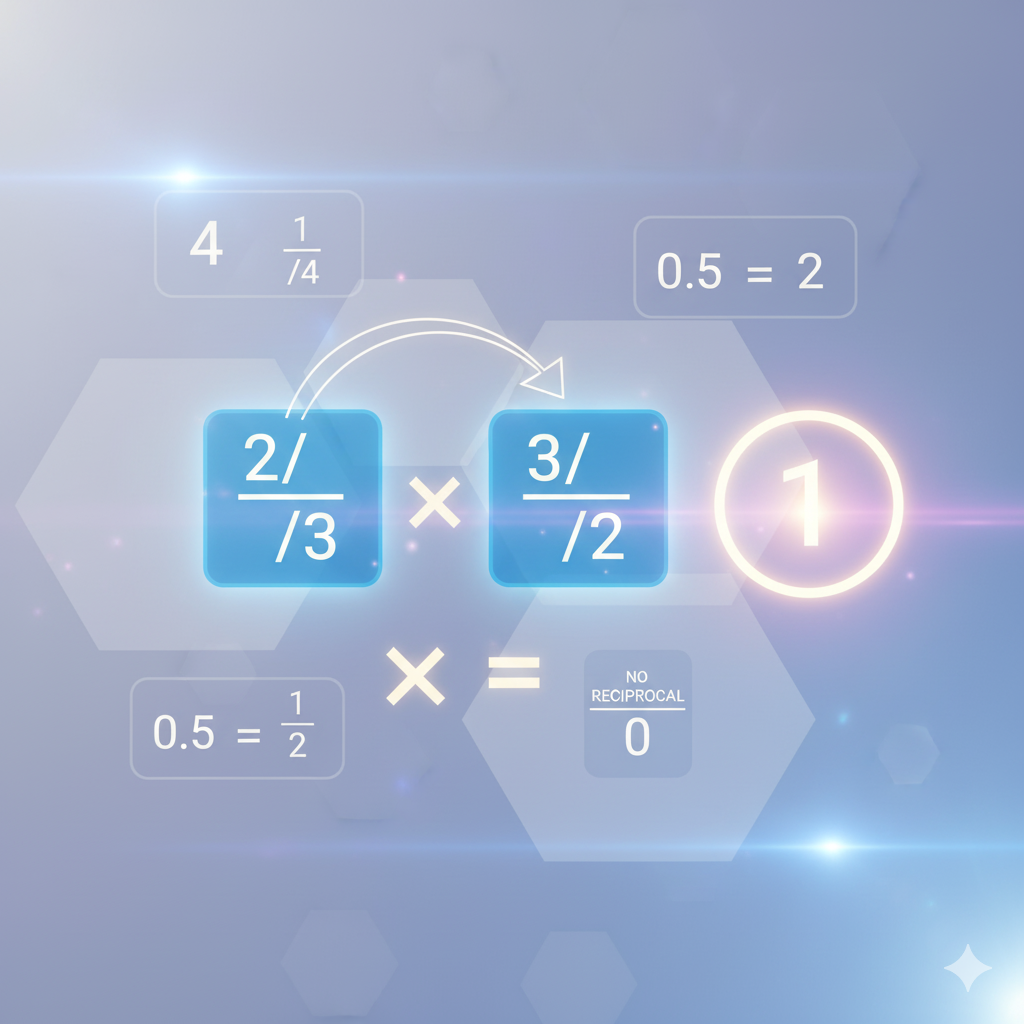Ever find yourself needing to divide fractions or deal with slopes in geometry? There’s one tiny, powerful concept behind all of it: the reciprocal.
In this post, I’m going to break down the Reciprocal Meaning Maths in the simplest way possible. Forget the textbook definitions for a minute—you’ll learn what it is, how to calculate it for any number, and why we actually care about it in the real world.
Let’s dive in!

Table of Contents
💡 What the Reciprocal Really Means
At its heart, the reciprocal is the number you multiply a starting number by to get 1. That’s it!
Think of it as the multiplicative inverse. It undoes the original number. $\frac{1}{x}$
- If your starting number is $x$, its reciprocal is $\frac{1}{x}$.
- The math rule is: $x \times \frac{1}{x} = 1$.
In simple terms, finding the reciprocal means flipping the number upside down.
*A Crucial Side Note: You can’t divide by zero, so 0 has no reciprocal. Don’t forget that!
🔢 How to Find the Reciprocal for Any Number
The “flip it” trick works for all kinds of numbers:
1. Whole Numbers
Just put a ‘1’ over the number.
- The reciprocal of 4 is $\frac{1}{4}$.
- The reciprocal of 10 is $\frac{1}{10}$.
2. Fractions (The Easiest!)
This is where the “flipping” idea comes from. Swap the top (numerator) and bottom (denominator).
- The reciprocal of $\frac{2}{3}$ is $\frac{3}{2}$.
- The reciprocal of $\frac{5}{8}$ is $\frac{8}{5}$.
3. Decimals
The easiest way is to convert the decimal to a fraction first, or just remember to divide 1 by the number.
- The reciprocal of 0.5 (which is $\frac{1}{2}$) is $2$.
- The reciprocal of 0.25 (which is $\frac{1}{4}$) is $4$.
4. Negative Numbers
The sign always stays the same! The negative is part of the number’s identity.
- The reciprocal of -3 is $-\frac{1}{3}$.
- The reciprocal of −52 is $-\frac{5}{2}$.
🧠 Reciprocals in Action: Properties & Algebra
The concept of Reciprocal Meaning Maths is the foundation for a few powerful rules:
- You always get 1: The number multiplied by its reciprocal is always 1. (e.g., $7 \times \frac{1}{7} = 1$).
- Double Flip Gets You Back: If you take the reciprocal of a reciprocal, you get the original number back. (e.g., The reciprocal of $\frac{1}{5}$ is $5$).
In Algebra, we use this all the time to simplify expressions:
- Reciprocal of 2x is $\frac{1}{2x}$.
- Reciprocal of 3x is $\frac{3}{x}$.
We often multiply by the reciprocal to solve division problems (remember: dividing by a fraction is the same as multiplying by its reciprocal!).
🌍 Where Reciprocals Show Up in the Real World
This isn’t just theory—reciprocals are constantly working in the background:
- Speed and Time: If you travel at 60 kilometers per hour, the reciprocal ($\frac{1}{60}$ hours per km) helps you quickly calculate how long it takes to travel a single kilometer.
- Slopes: In geometry, two lines are perpendicular if their slopes are negative reciprocals of each other (e.g., a line with a slope of $2$ is perpendicular to a line with a slope of $-\frac{1}{2}$).
- Music and Sound: The frequency of a sound wave is the reciprocal of its period (the time it takes for one wave cycle).
🏁 Quick Check
| Number | Reciprocal |
| $3$ | $\frac{1}{3}$ |
| $\frac{5}{2}$ | $\frac{2}{5}$ |
| $-4$ | $-\frac{1}{4}$ |
| $0.25$ | $4$ |
| $7$ | $\frac{1}{7}$ |
The next time you’re facing a tricky division problem, just remember: you don’t need to divide—you just need to flip and multiply! Happy calculating!
Check out my post on Positive Words
